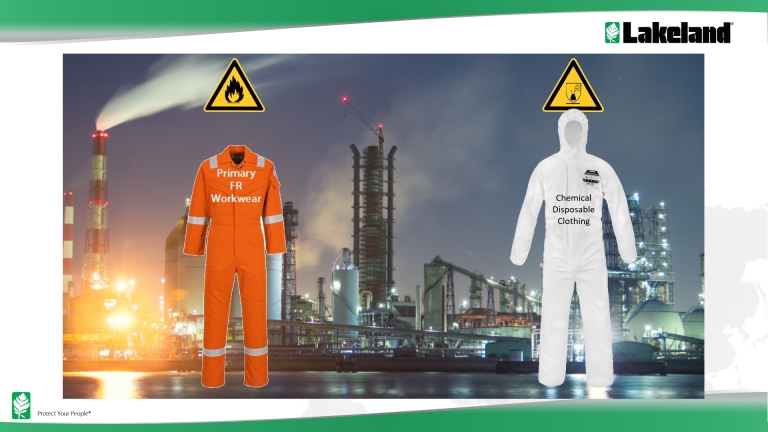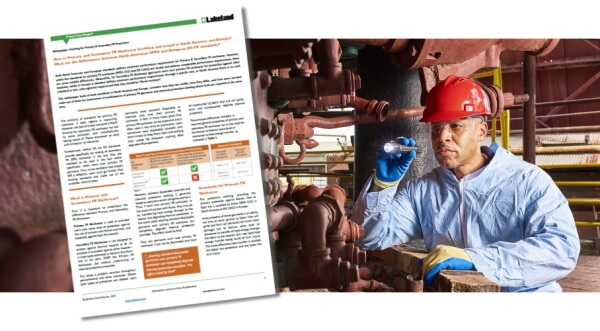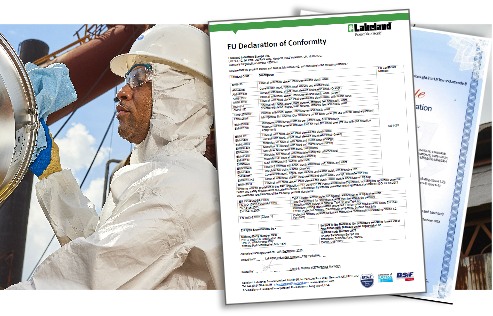What are the real-world implications of these often very common misunderstandings?
This blog looks at three of the myths in the book and how they could have catastrophic consequences.
There are many myths in the PPE industry and while exploding them can be entertaining, it is also important. Any misunderstanding of safety standards could result in use of PPE that is unsuitable… and that workers are not protected as they should be, or in the worst cases, that they are not protected at all.

Three examples where misunderstanding safety standards could result in a failure to protect workers
Myth Number 1
The assumption that CE standards always test finished PPE.
 Myth number 1 deals with the assumption that flame retardant workwear garments are tested to ensure effectiveness. This is generally simply not true. All the required tests in EN 11612 test only the fabric and components independently and not the actual finished, assembled garment.
Myth number 1 deals with the assumption that flame retardant workwear garments are tested to ensure effectiveness. This is generally simply not true. All the required tests in EN 11612 test only the fabric and components independently and not the actual finished, assembled garment.
The fact is, the construction of a finished garment can have important consequences for its effectiveness. In this case, the sizing of the garment is important in forming an insulating layer of air between the fabric and the wearers’ body. If a garment is tight, it will be less effective at insulating from some types of heat energy.
As a consequence, the relevance of the standard’s five heat energy resistance tests on samples of fabric may be of limited use if a garment is poorly designed without this understanding. In fact, a fabric that performs well in a specific heat energy resistance test could have its performance undermined by being used in a garment that is too tight on the body!
What could be the real-world consequence be of Myth 1 for health and safety at work?
Some years ago, I visited a factory that manufactured FR workwear. The owner proudly showed his new designs, a key objective of which was to produce garments more shaped to the body, generally tighter and therefor, more stylish than most garments on the market. He wanted to produce FR garments that users would want to wear.
It’s a good idea from a marketing point of view and one that has been pursued in many sectors of the safety industry. However, for FR workwear it is not such a good idea. A user encouraged by heat resistance test classifications and samples may feel better about how they look in the garment without realizing there might be a safety problem.
That problem, of course, won’t become apparent until there is an accident. Then, because of the lack of insulation between garment fabric and skin, the wearer could suffer burns more extensive and deeper than expected. The possible consequences of this simple assumption are very real indeed.
Construction of PPE can have an important effect on the performance of the finished item. Not recognizing where standards test only components can be critical. In this example, the standard actually does include an optional test that does provide an indication of real-world performance of the finished garment. The problem is because it is optional.
Myth Number 3
The assumption that different PPE certified to the same safety standard has been subjected to the same tests.
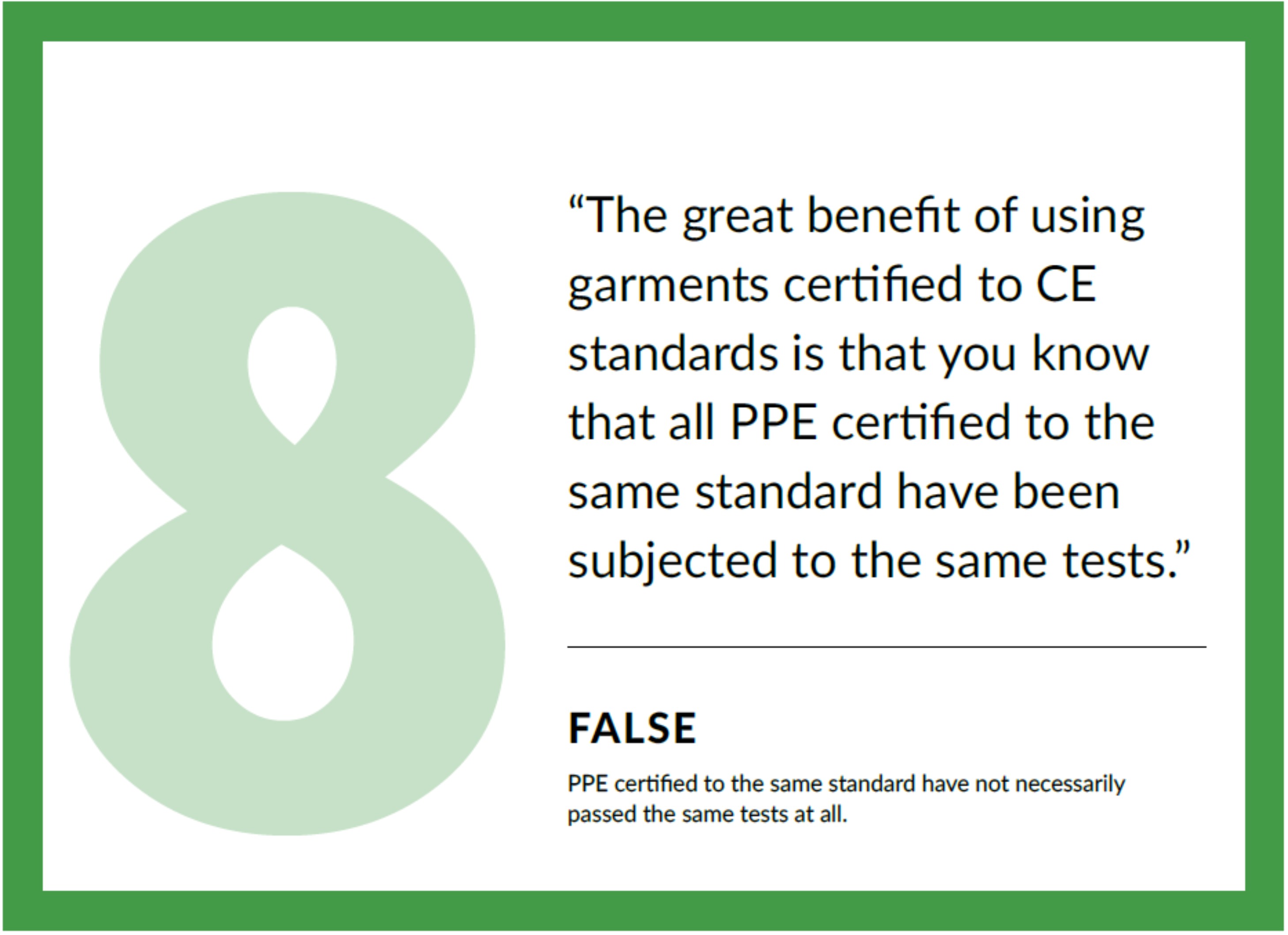
And it is undoubtedly reasonable to assume that PPE certified to a standard has been subjected to the same tests. It can therefore come as a shock to realize this is not necessarily the case at all – for two reasons:-
- Some tests in standards are optional, so different PPE certified to the same standard has not necessarily been subject to the same tests. Also, optional tests conducted may not be relevant to your application.
- The system of certification – and this is the most shocking aspect of all – allows for manufacturers to exclude specific requirements even where that requirement is listed as a minimum.
So, even those tests in a standard that are apparently required as a minimum, can be simply left out in the certification process. Any omission must of course be explained in the accompanying User Instructions. But of course, we know that user instructions are often detailed, contain very small print in multiple languages, and are rarely read by users.
In some cases, the consequences can be considered fairly minor. For example, the standard EN 1073-2 for non-ventilated clothing to protect against radioactive-contaminated dusts requires a minimum fabric puncture resistance of Class 2. Since most disposable garment fabrics achieve only Class 1 they tend to be certified with this requirement excluded. However, it is fair to say that this issue is not substantive; it probably makes little difference to the real-world performance of the garment. On the other hand, there are examples that may indeed result in real-world consequences.
The bizarre certification of FR SMS disposable safety clothing
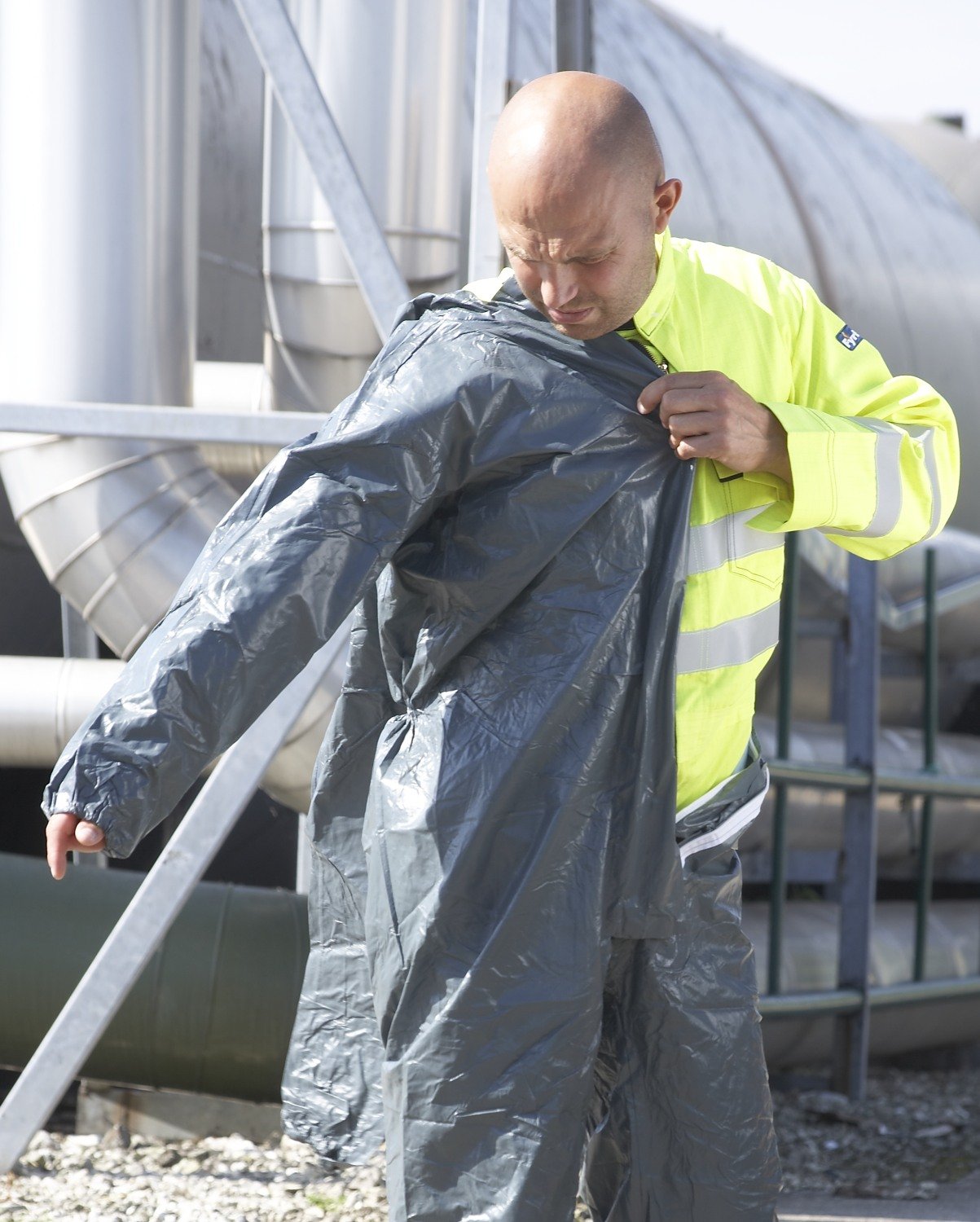
- The standard was upgraded in 2015 with new minimum performance requirements including flammability testing of the zip assembly, with an additional requirement that it should function at least once after the test.
- Some types of existing garments (FR SMS-based) are simply unable to meet these new requirements.
- Those products have been allowed to be certified to the new standard but excluding the new requirements they cannot meet.
- So in effect, these products are certified to the old standard, but have been granted certificates for the new standard, implying to users that they have passed the new requirements in the new version when they have not.
What could be the real-world consequences of Myth 8 for health and safety at work?
FR SMS fabric-based coveralls simply do not fulfill the new requirement – despite being certified to the new standard.
In more specific terms:-
- The standard was improved and new requirements added for good reason; because the old version failed to consider and test elements of the garment as a whole and components other than the fabric. (After all, if that is not the case then what was the point of upgrading the standard at all?)
- The zip on disposable garments is plastic and therefor flammable. Contact with flame may cause the zipper to ignite and burn in the worst place possible, immediately below the wearers’ face.
- The requirement for the zip to function afterwards is clearly to enable a garment to be quickly removed if it is burning.
- The real-world consequences therefor of not meeting this new requirement could be disastrous, and testing of the zip is important. It is not a minor issue.
Worryingly, most users probably continue to wear such FR SMS garments, remaining unaware that they do not meet a key requirement in the standard. They can easily believe they are better protected than they are.
This fact will not become apparent until there is an accident, at which point the real-world consequences may become very apparent indeed.
Myth number 10:
“Drink deep… or don’t drink at all…”. The assumption that certification makes PPE safe to use.
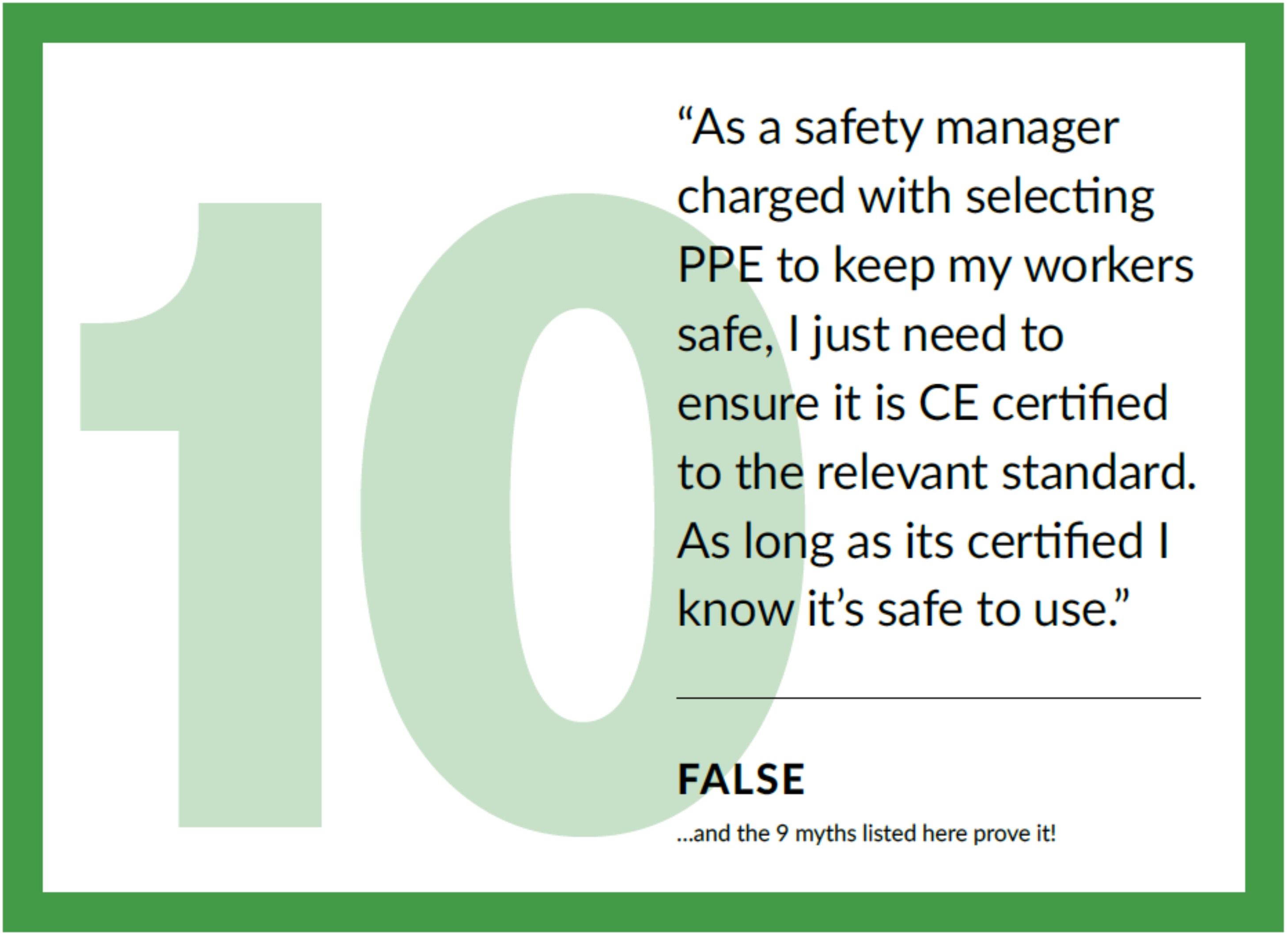
Poetry of any type, much less early 18th century varieties, would not normally feature in a safety blog, but Alexander Pope identified the problem quite precisely in “An Essay to Criticism”, published in 1711.

It is the origin of a proverb many will know: “A little knowledge is a dangerous thing.” A “shallow draft” understanding of safety standards can be dangerous. It can mean you fail to understand the limitations of your PPE.
It is almost inevitable that standards suffer from limitations, contradictions, and anomalies that can mean products are not what you have assumed they are from your “shallow draught” and that workers are not as well protected as you believe. This blog has given three specific examples; there are many more. For example:-
- Not understanding the difference between the tests ISO 16603 and 16604 in the EN 14126 standard might deceive you into you believing you are well protected against deadly viruses such as SARS or Ebola when you may not be. The real-world consequences could be contamination with a deadly virus and all that that entails.
- Assuming that “breakthrough” in a chemical permeation test for chemical suits means “no chemical has broken through the fabric” might mean you believe wearers are not coming into contact with a chemical when they may be. For many highly toxic chemicals the consequences could be catastrophic yet may not become apparent for years to come.
- Not understanding the implications of different optional heat energy resistance tests in EN 11612 and thus failing to ensure your garment choice is suitably tested might mean your FR workwear is close to useless for your real-world application.
The important take-away for health and safety at work
We are all busy people leading hectic lives, and spending our valuable time on a proper understanding of often complex standards can be a challenge – especially when it is easy to believe simple confirmation of certification to that standard is enough to ensure safety.
Yet a safety manager’s primary responsibility must be to ensure workers are properly protected. This unavoidably means proper understanding of the detail within standards; what is in them; what the minimum requirements defined are, how the testing is conducted, what it means, and how it is relevant or not to your specific application.
And of course, the real problem is that you may not find out about those myths until there is an accident and ultimately, people get hurt.

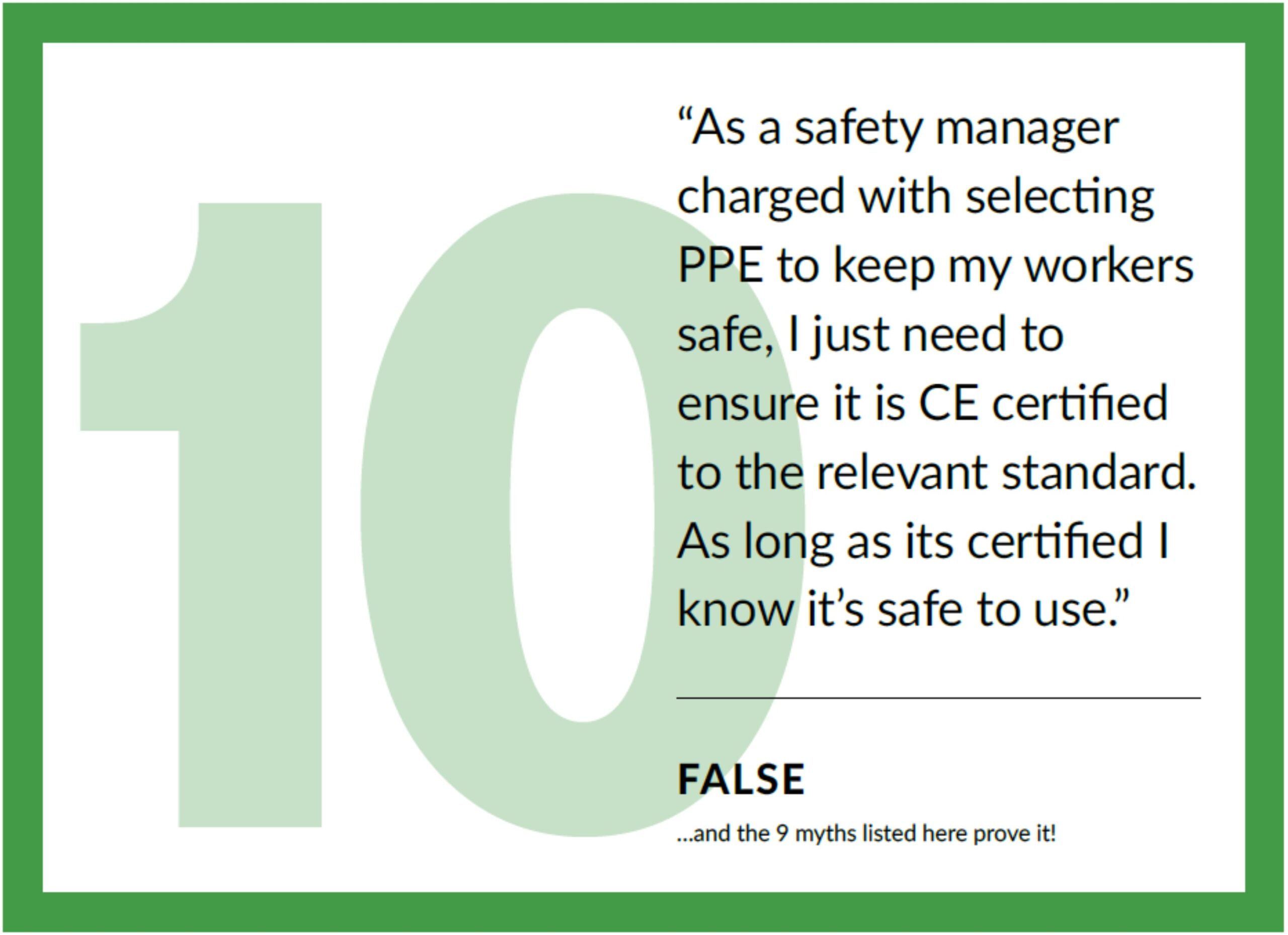
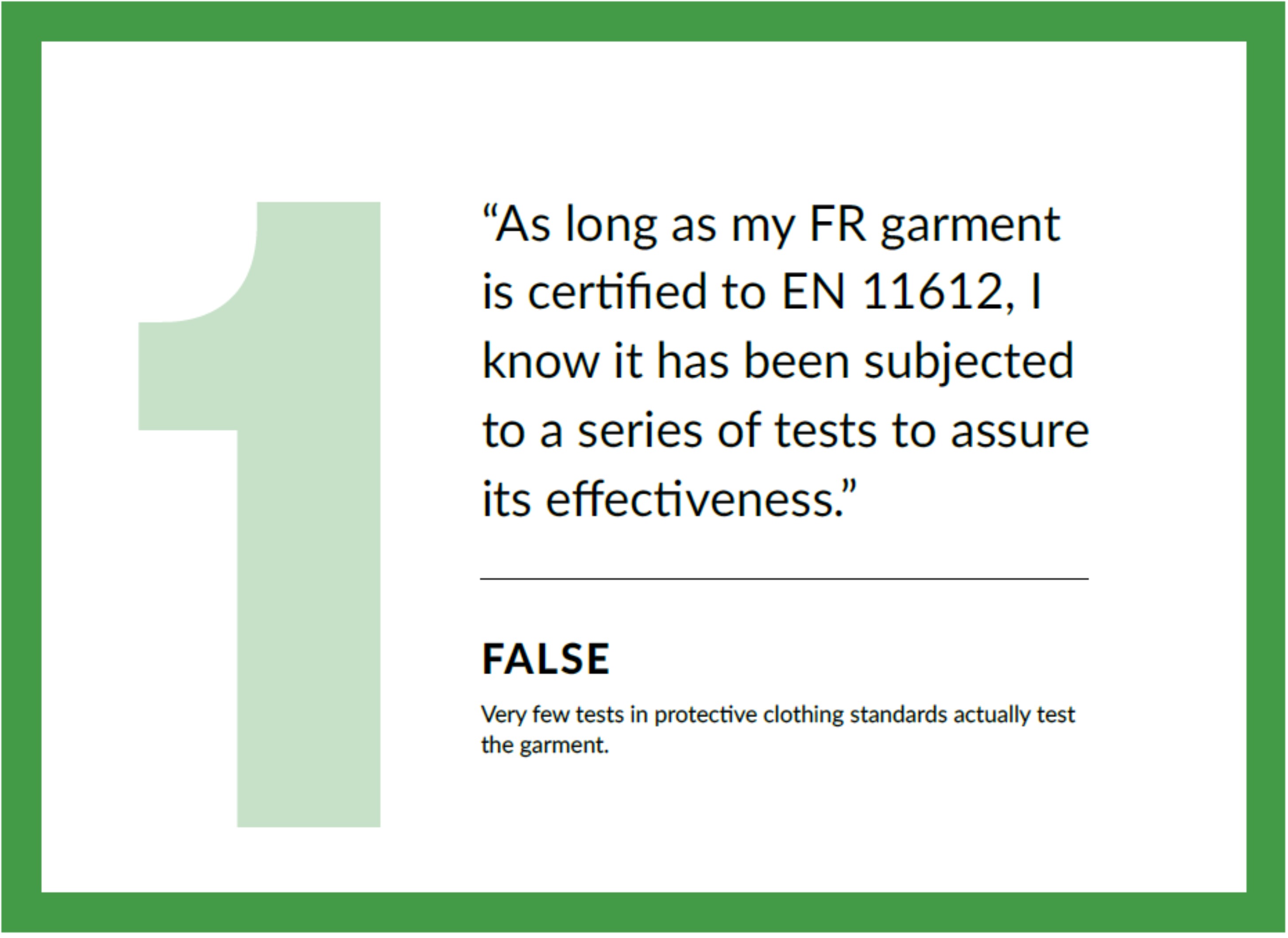 Myth number 1 deals with the assumption that flame retardant workwear garments are tested to ensure effectiveness. This is generally simply not true. All the required tests in EN 11612 test only the fabric and components independently and not the actual finished, assembled garment.
Myth number 1 deals with the assumption that flame retardant workwear garments are tested to ensure effectiveness. This is generally simply not true. All the required tests in EN 11612 test only the fabric and components independently and not the actual finished, assembled garment.




